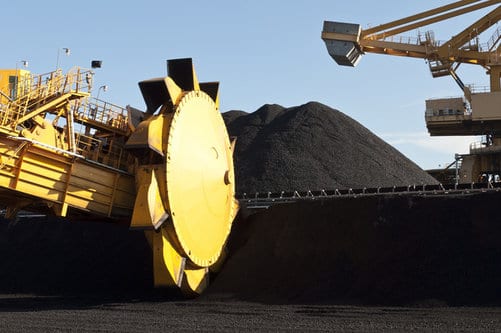
If the G20 taught us anything, it was that the international community really isn’t interested in our attempts to ignore climate change.
New research released by Beyond Zero Emissions today shows us just how much that can cost.
Announcements from the US, China and India last week signalled the shift away from fossil fuels by the international community, including countries that are key importers of Australia’s coal and gas.
The latest report from the UN Environment Programme (UNEP), released Wednesday, calls for an end to carbon pollution by 2070, followed by action to reduce greenhouse gas emissions already in the atmosphere (what we call ‘beyond zero’).
The Bureau of Resources and Energy Economics (BREE) unfortunately missed the memo.
The Australian Government relies on BREE’s economic forecasts, but BREE isn’t paying attention to global markets. BREE’s projections are based on the idea that Australia can continue exporting fossil fuels into the future.
It is completely unrealistic to expect that Australia will be able to grow its share of fossil fuel production whilst other countries reduce their share in a world with strict limits on carbon emissions.
When Australia’s current energy policy goals are put into the context of the recommended international targets, Australia’s annual fossil energy production rises from 4% to 16% of the annual global allowance by 2050 to remain below a 2degC temperature increase.
There is already a shortfall between BREE’s projected earnings and real earnings from fossil fuel exports. Based on projections by the International Energy Agency (EA) , that takes the global carbon budget for a safe climate into consideration, that shortfall will be up to $100 billion annually by 2030.
BZE’s research has found that the divergence in demand between the high trajectory (which follows BREE projections) and low trajectory (which corresponds to the IEA 450ppm scenario) cases amounts to shortfalls in gross annual export revenue of $65 billion in 2020 and $120 billion in 2030.
The shortfall associated with the mid trajectory case is approximately half of this. In terms of net national income, and accounting for foreign claims on export profits, the divergent trend is maintained though the magnitudes are reduced by approximately 25 per cent.
To gauge which trajectory case best reflects the policies and ambitions of Australia’s major trade partners BZE has reviewed the latest targets and announcements of China, Japan, South Korea and India. Each of these nations is exploring new ways to satisfy their energy needs. The factors driving changes in energy policy vary, but the effect is the same; namely, less demand for Australian resources.
The expectation of ongoing demand for Australia’s emission-intensive resources falls further into doubt with each new commitment made by developing countries, particularly China and India. Real world feedbacks are leading emerging economies to change their approach to development, departing from the post-war model which served today’s advanced economies well.
Ignoring global political action on climate change places Australia at risk of being unprepared, economically and financially, for changes already taking place. The government continues to pursue a strategy that assumes economic prosperity is dependent on mining and the extraction of emissions-intensive resources.
This strategy is short-sighted. Australia needs to rapidly diversify its economy to take advantage of the opportunities from the transition to clean and renewable energy, as well as be less dependent on resources that do not have a future in a carbon constrained world.
Living within our means, at least as far as the carbon budget allows, offers opportunities that the country has been actively moving away from. Investments in renewable energy and clean technology investment made now can future-proof the economy.
Australia can achieve continued prosperity on sustainable foundations. De-carbonising economic pathways have been analysed and shown to provide ongoing employment and investment opportunities while respecting economic constraints. This has been shown at a generic level by the New Climate Economy project by the Global Commission on the Economy and Climate in support of the recent UN climate summit, and upcoming negotiations in Paris.
It has also been shown for the Australian context in numerous works surrounding the introduction of the Clean Energy Future Package, by the Australian Treasury, the Garnaut Review, Australian Conservation Foundation and ACTU as well as most recently in ClimateWorks’ contribution to the Deep Decarbonisation Pathways Project.
If Australia does not prepare for the global shift to clean energy, we have little to offer the world in one of the greatest commercial opportunities ever.
As was pointed out by Christiana Figueres, the United Nations Framework Convention on Climate Change (UNFCCC)’s executive secretary this week, there are no uncertainties with the science of climate change, only with the politics.
BZE has developed a number of blueprints that, if followed, could lead Australia to a ‘beyond zero’ emissions economy through the use of renewable energy, changing modes of transport, clever use of energy and utilising forest and farmland to remove atmospheric carbon pollution. To paraphrase Ms Figueres, there are no uncertainties with the technological solutions to climate change, only on when we choose to implement them.
Stephen Bygrave is Chief Executive of Beyond Zero Emissions.







